Let’s talk...
About anxiety: What happened to the little owl when her mother left her? How did she feel? How did the owl overcome her anxiety about her mother’s absence? What helped her?
Let’s communicate...
When we leave our child with others, it’s important for us to communicate and align expectations with the child and the adult responsible for them during our absence. We can create a schedule together and use symbols for our return time. For example: I’ll be back “after lunch” or “at sunset.”
What are our bedtime rituals at home? Let’s create a visual sleep routine chart together. We can add pictures and drawings; for example: a warm bath, gentle massage, bedtime story, and a goodnight kiss.
Let’s create...
Let’s make our own special night lamp that lights up exactly as we like. We can use cardboard or a small glass jar to decorate, adding a small light inside for a cozy glow.
Let’s talk...
About desires and feelings: The girl wanted a shiny bag decorated with planets, but she got another bag which made her angry. We can follow the angry child’s behavior in the story, and ask our child: How did the child express her anger? How did she behave with her classmates? How did her feelings change? Was the bag really terrible? How did her view of it change?
About similar experiences: We can talk to our child about experiences similar to the story. We can ask them: Has it happened that you strongly desired something, like the child in the story, and got something else? How did you feel? How did you behave?
Let’s enrich our language...
The story is rich with words and terms from the world of space, such as: planet, star, galaxy, space dust, Halley’s comet, spaceship, and many other terms. Let’s search for them in the story together.
Let's imagine...
The cardboard box became a spaceship; let’s imagine and complete the following sentence: This is not a box but it could be…..
Let’s create...
We can recycle some cardboard and shoe boxes at home, and make new toys such as: a spaceship, doll houses, a jewellery box, a car and others.
Let's research...
We can visit a museum that displays information about space, or watch a family movie about space.
Let’s talk...
About new beginnings: we can talk to our children about the feelings they had when they encountered new experiences such as their first day at school, a new class, or a friend’s birthday. We can explore ways that helped them adapt together.
About diverse experiences: The box captured for us rituals and family experiences, such as arranging winter clothes, playing in the courtyard, enjoying ice cream, preparing thyme pies (Manaquesh), and playing with the box. We can ask our child: Which rituals resemble those in our home, and which ones are different? We can describe them together.
Let’s play...
Let’s use our imagination and guess! We can sit in a group, and each person takes turns silently acting out an object (such as a cup, cat, lion, hammer), and others have to guess what this object is, and so on (time can be specified).
The magic of imagination: We can gather various objects (like hat, a pot, a scarf…) and explore diverse uses for the object, or imagine it as something else.
Let’s create...
Recycling: The book sheds light on the topic of recycling. We can also create a bag from old pants for example, or plant pots from pickle jars, etc.
Let’s enrich our language...
We can choose another object as the “hero” of the story, such as a bag or clothes, and we can creatively write a story about it from its perspective.
Let’s talk...
About problem-solving: We can ask our children about the problems the animals faced, how they behaved, how the problem escalated, and how they found a solution.
About feelings and thoughts: We can trace the drawings, describing the characters’ emotions and actions in different situations. We can give “qualities” to each character.
About cooperation and confidence: With our children, we can recall some family and school challenges that everyone successfully overcame as a group, emphasizing the importance of each person’s role. We discuss with our children their roles in overcoming these challenges.
Let’s explore and initiate...
We contemplate: we can search for and present problems in our neighbourhoods and towns, such as garbage issues, and brainstorm ways to address them.
Let’s act...
We can act out situations where our child may face individual or group problems and discuss ways to cope with them, such as a disagreement with a friend, losing a game, a student getting injured on a school trip, or facing bullying from an individual or a group.
Let’s create...
With our child, we can prepare an “I Can Jar:” Together, we can write phrases on paper scraps describing things we can do together that benefit us and others. We can identify a positive change we want to make, for example: “I can say no to bullying,” “I can help a friend in need,”
Let’s talk...
-About the mouse’s feelings: We can read the story with our children a few times. We can talk about the mouse’s feelings from the beginning to the end of the story. We can also ask our children how the mouse feels and why she feels that way in each event of the story.
-About feelings of shyness, fear and nervousness: We can ask our children if they have ever felt the feelings the mouse had. When did they feel like that? Who helped them deal with these feelings? and how?
-About disappearing and hiding: We can ask our children if they ever felt the need to hide or disappear like the mouse did. When did that happen? And why?
-About our safe place: The mouse hid behind the curtain, and there, she felt safe. We can ask our children: What places make them feel safe and comfortable at home? And why?
-About skill: The little mouse was skilled at hiding. We can ask our children about the things they are good at, and we can talk to them about them.
-About adaptation in the beginnings: We can talk with our children about the feelings they had at the beginning of different stages or experiences they went through for the first time, such as talking about their first day at school, a new course, or the birthday of a new friend. Together, we can look for ways to help them cope.
Let’s explore...
-Magical Hand: Moonlight School is a night school for teaching magic. We can search online with our children for videos of fun sleight of hand magic tricks that can be used with children.
-Hide-and-seek: Miss Moon played a game of hide-and-seek with the animals. Hide and seek is a fun game that requires mental and social intelligence, and we, the parents, played it during our childhood. We can play hide and seek and have fun with our children.
Let’s talk...
About the shoes’ feelings: We can read the story with our children several times. We can trace the drawings, and talk about the feelings of the shoes from the beginning to the end of the story.
we can ask the children: How do the shoes feel? We name the feelings, and
We ask them: Why did they feel this way?
About overcoming stress and anxiety: How can we help the shoes overcome stress, fear and anxiety? How can we help them calm down?
About our experiences in overcoming anxiety: We can share an experience that caused us to feel anxious with our children and tell them how we overcame it. Then, we can ask them about an event which made them feel stressed and anxious, and how they were able to overcome these feelings.
About friends in kindergarten: We can look at the last page and half of the book, and ask our children about what they do and how they feel in kindergarten, what we feel about them, and what we think about them. Then we can talk to our children about their kindergarten friends: What do they do? How do they feel?
About courage: On page 28 of the book, Lina mentions the shoes and tells us about the scenarios in which they were able to be brave and overcome anxiety and fear. We can talk about those situations, we can describe each event and the feeling that goes with it, and we can remind our children of events where they overcame their stress and fears, and were also brave.
Let’s create...
Safety box: With our child, we can prepare a special box, decorate it, and inside it, we can put a family picture and other items that make our child feel safe. In coordination with the teacher, we can ask that the box be placed in kindergarten, to be given to our child when they feel longing for home, and when they face some tension and anxiety.
Let’s act...
With our child, we can act out what they can do when they feel anxious and nervous in kindergarten (for example: to go to the teacher and share their feelings with them; to take their safety box, etc.).
We can talk with...
Together, we can...
Together, we can look at the cover of the book and read its title aloud. We can talk with our child about the paradox between the the title, which suggests that the child is asleep, and the illustration, which shows the opposite. We can browse the book’s drawings, looking for the smile on the father’s lips, and the smile on Alfie’s lips. What does it tell us about the feeling and mood of each of them? We can search for other physical expressions and talk about what they indicate.
Alfie’s father in...
Alfie’s father in this story is the one who cares for him and takes care of him. This is an occasion to have a dialogue with our child about the things they would like to do during the day with their father in particular.
The illustrator uses...
The illustrator uses the “collage” method, in which she inlays her drawings with pieces of cloth, with wool threads, and with various pictures from newspapers, magazines and postcards. Together, we can design a painting in which we mix these elements, and add others that are available in quantity at home.
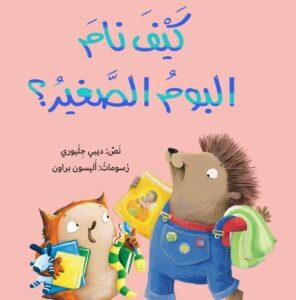 How the Little Owl Slept
How the Little Owl Slept  My Terrible Bag
My Terrible Bag 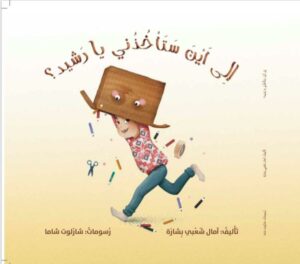 Where will you take me, Rashid?
Where will you take me, Rashid? 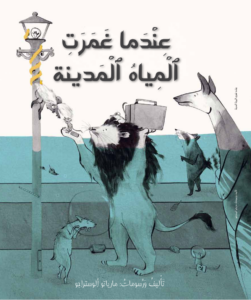 When Water Flooded the City
When Water Flooded the City 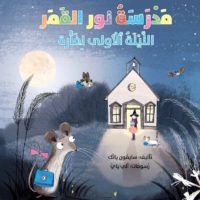 Mouse’s First Night at Moonlight School
Mouse’s First Night at Moonlight School 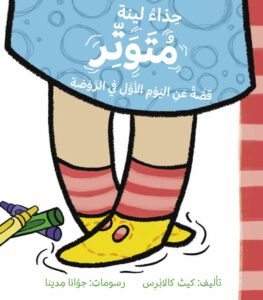 Lena’s Shoes Are Nervous
Lena’s Shoes Are Nervous 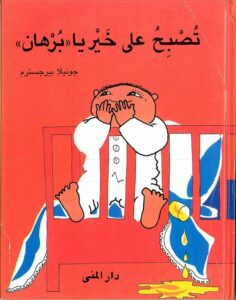 Good Night Burhan
Good Night Burhan 
